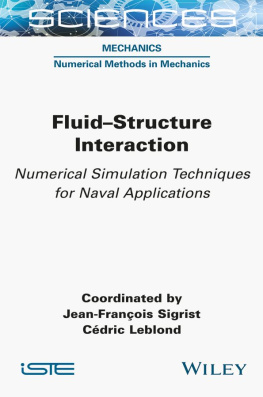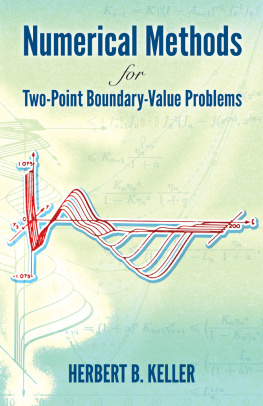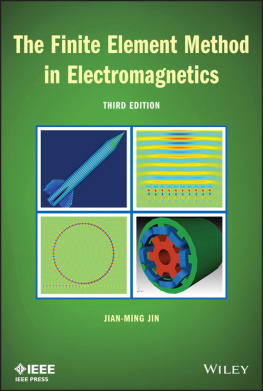
SCIENCES
Mechanics, Field Director Gilles Pijaudier-Cabot
Numerical Methods in Mechanics, Subject Head Sylvain Drapier
FluidStructure Interaction
Numerical Simulation Techniques for Naval Applications
Coordinated by
Jean-Franois Sigrist
Cdric Leblond

First published 2022 in Great Britain and the United States by ISTE Ltd and John Wiley & Sons, Inc.
Apart from any fair dealing for the purposes of research or private study, or criticism or review, as permitted under the Copyright, Designs and Patents Act 1988, this publication may only be reproduced, stored or transmitted, in any form or by any means, with the prior permission in writing of the publishers, or in the case of reprographic reproduction in accordance with the terms and licenses issued by the CLA. Enquiries concerning reproduction outside these terms should be sent to the publishers at the undermentioned address:
ISTE Ltd
27-37 St Georges Road
London SW19 4EU
UK
www.iste.co.uk
John Wiley & Sons, Inc.
111 River Street
Hoboken, NJ 07030
USA
www.wiley.com
ISTE Ltd 2022
The rights of Jean-Franois Sigrist and Cdric Leblond to be identified as the authors of this work have been asserted by them in accordance with the Copyright, Designs and Patents Act 1988.
Library of Congress Control Number: 2022945473
British Library Cataloguing-in-Publication Data
A CIP record for this book is available from the British Library
ISBN 978-1-78945-078-1
ERC code:
PE8 Products and Processes Engineering
PE8_3 Civil engineering, architecture, maritime/hydraulic engineering, geotechnics, waste treatment
PE8_5 Fluid mechanics, hydraulic-, turbo-, and piston- engines
Foreword
Numerical Simulation: A Strategic Challenge for Our Industrial Sovereignty
Herv GRANDJEAN
Ministre des Armes, Paris, France
In December 2020, Emmanuel Macron, President of the French Republic, decided with Florence Parly at that time Minister for the Armed Forces to endow the next generation of French aircraft carriers with nuclear propulsion. Only a few months later, the first part of this future aircraft carrier 270 metric tonnes not withstanding! left the Creusot forge. Some 75,000 tonnes are still to be produced in order to complete between now and the end of the next decade the construction of the future French navy flagship, which will then sail for nearly 40 years.
The size of such a ship, its performance and its longevity illustrate what constitutes the beauty of the naval domain for engineers: its complexity! Whether it involves fluid mechanics or structural mechanics, optronics, wave theory, operational safety or ergonomics, etc., designing a ship necessitates recourse to multiple sciences, combining them and identifying integration constraints, to ultimately provide a draft that will satisfy the needs of crews. When it comes to assembling on a single platform, nuclear power stations, an air base, a hospital and everything needed for a town of 2,000 inhabitants to function autonomously for several months, we consider that the term naval genius is not misused!
Unlike land vehicles or aircraft, serial effects are very limited in the naval arena. Moreover, the enormous size of projects does not allow us to envisage the construction of prototypes for aircraft carriers, submarines or liners: it is therefore necessary to succeed at the first attempt! And this is to a large extent also true for tidal turbines or large industrial pumps. Numerical simulation has therefore become central to the design of complex systems. Whether it is to estimate a ships maneuvering performance, the fatigue of the ships girder after tens of thousands of hours at sea, or the sound radiated underwater by a moving structure, only numerical simulation makes it possible to quickly test a large number of configurations and design a system that satisfies user demands in terms of performance, cost and conformity to regulations. Tests on models of course remain essential, especially for evaluating the most complex physical problems, but these arrive at the end of a digital pathway that will have largely cleared the field of possibilities.
It is therefore essential for actors in the maritime world, whether they are manufacturers responsible for imagining and building products design firms, shipyards or customers and providers shipowners, the Directorate General of Armaments or the supply chain to understand the potential of digital simulation, to grasp its power but also to discern its limits.
The book that you are now holding constitutes an essential contribution in this respect, both erudite and accessible. It is the result of the work of academics and those from the industrial world, all of whom are very talented scientists. It combines a theoretical approach and a practical approach, both of which are vital when tackling the design of naval systems. The book will give students and informed audiences, whether professional or amateur, an overview of the most recent techniques in numerical simulation for fluidstructure interaction, which will be of concrete use for them in becoming, in turn, architects of great industrial projects.
Preface
FluidStructure Interactions in Naval Engineering
Jean-Franois SIGRIST1 and Cdric LEBLOND2
1 DGA, Tours, France
2 Naval Group, Bouguenais, France
Published in 1870, in the century that saw the formalization of the equations governing fluid flows (Navier 1823; Cauchy 1829; Reynolds 1883; Stokes 1845), Twenty Thousand Leagues Under the Sea is one of the most well-known works by the French writer Jules Verne (18281905). Today, it is also among the 20 best- selling books in the world; it gave rise to many cinema, television and comic book adaptations. Professor Aronnax, an eminent expert from the Natural History Museum in Paris, his servant Conseil and Ned Land, an experienced sailor and seasoned harpooner, embark on the Abraham Lincoln to find a sea monster. The extraordinary beast is in reality a machine made from steel and electricity: the Nautilus, a formidable engine imagined, built and ordered by Captain Nemo, to reign supreme in the world under the sea. Over the course of their long stay on the submersible, the novels three heroes discover magnificent countries and experience incredible adventures. They measure the vastness of the ocean, its resources and its riches. This odyssey, which took them more than 20 thousand leagues under the sea, was a voyage of dreams and discoveries for Professor Aronnax, but a gilded cage for Ned Land, enamored of the freedom that sailing on the seas surface affords. Verne gives Captain Nemo these words:
If danger threatens one of your vessels on the ocean, the first impression is the feeling of an abyss above and below. On the Nautilus mens hearts never fail them. No defects to be afraid of, for the double shell is as iron; no rigging to attend to; no sails for the wind to carry away; no boilers to burst; no fire to fear; for the vessel is made of iron, not of wood; no coal to run short, for electricity is the only mechanical agent, no collision to fear, for it alone swims in deep water; no tempest to brave, for when it dives below the water, it reaches absolute tranquillity. There sir! That is the perfection of vessels! And if it is true that the engineer has more confidence in the vessel than the builder, and the builder than the captain himself, you understand the trust I repose in my
Next page









